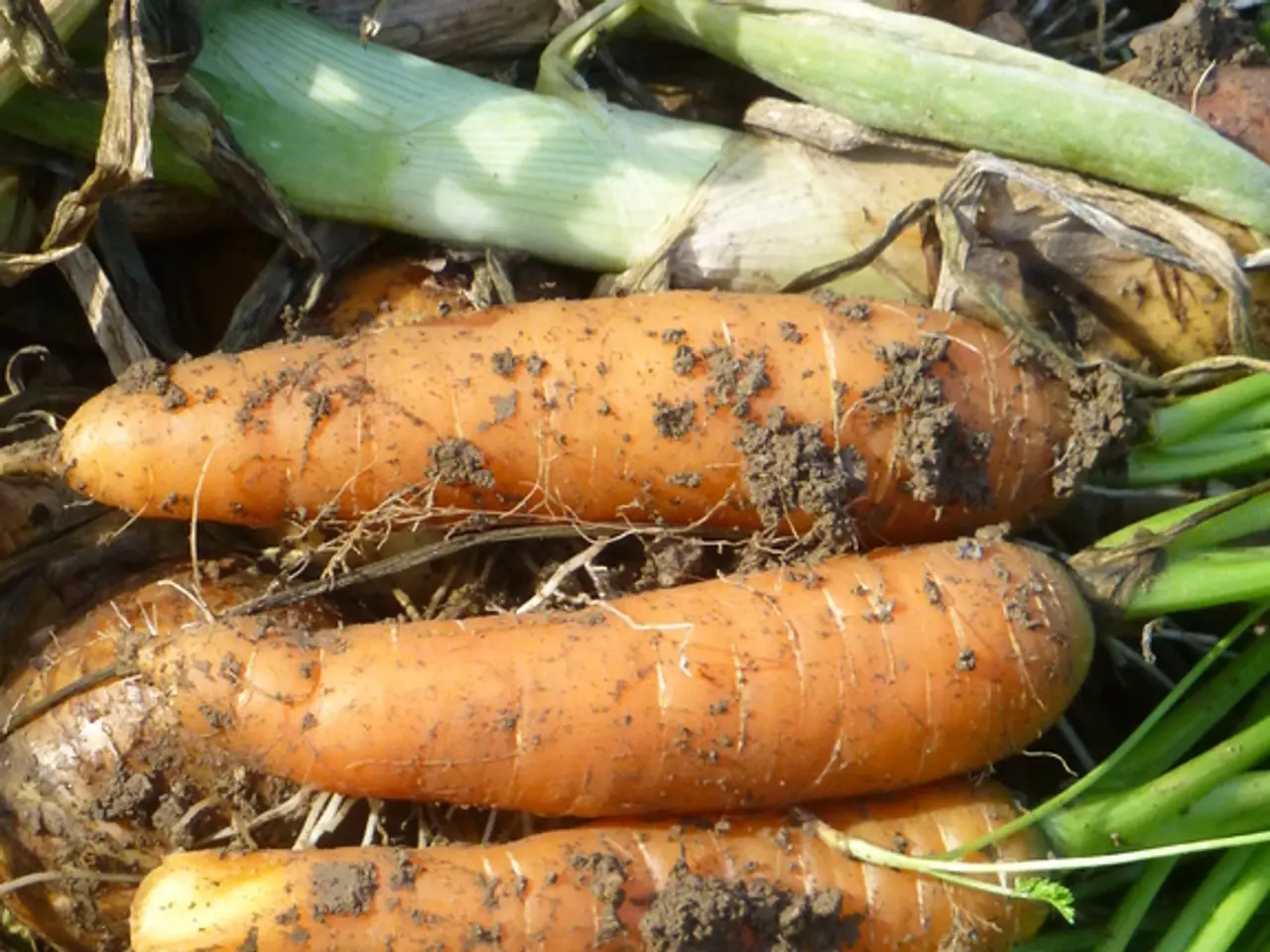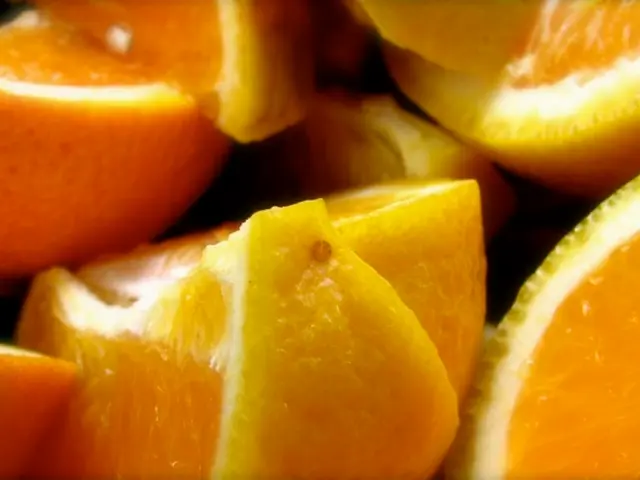Strategies for Evading Carrot Root Flies: A Comprehensive Guide
In the world of gardening, one common pest that carrot growers often face is the carrot root fly. This fly can cause significant damage to carrot crops by burrowing into the roots, creating tunnels. Here are some practical methods to prevent carrot root fly infestations, ensuring a bountiful harvest of carrots.
One effective approach is the use of physical barriers. Immediately after sowing, covering carrot crops with horticultural fleece or ultra-fine mesh like Micromesh Pest & Wind Barrier can create a physical barrier, preventing the flies from reaching the crops and also protecting against harsh winds. For pot-grown carrots, barriers can also be created.
Crop management practices play a crucial role in preventing carrot root fly infestations. Rotating crops, especially avoiding planting carrots in previously infested soil, is essential. Carrot fly larvae can overwinter in the soil, and rotating with non-parsley family crops can help reduce larval survival. Additionally, adjusting sowing times to avoid peak egg-laying periods, typically mid-April to end of May and mid-July to end of August in the UK, can help evade the main carrot fly activity.
Choosing resistant varieties of carrots, such as 'Flyaway', 'Ibiza', 'Maestro', 'Parano', 'Resistafly' and 'Sytan', can also help limit carrot fly infestations. These varieties are bred to be less susceptible to carrot fly damage.
Another strategy is companion planting with repellent plants like garlic, leeks, and chives. While this method is not mentioned as a method to limit carrot fly infestations in this paragraph, planting garlic next to carrots, for example, has been noted as an effective deterrent.
Lastly, applying nematodes to soil can provide an organic treatment option. These microscopic organisms attack and kill carrot fly larvae, reducing root damage.
In conclusion, the best approach to effectively reduce carrot root fly infestations combines physical barriers, crop management practices (rotation and timing), resistant varieties, companion planting (if applicable), and potentially biological nematode treatment. Sowing carrots later in the season can help reduce the risk of infestations, but be aware that the second generation of carrot fly is on the wing from July to September, so later sowings may still be at risk. Thinning out carrots during growth should be minimised as it releases a carroty scent that attracts carrot flies, making the need to thin out the crop after germination less necessary.
Implementing crop rotation in home-and-garden gardening can help prevent carrot root fly infestations, as rotating with non-parsley family crops can reduce larval survival in the soil. Maintaining a diverse lifestyle in gardening by planting resistant varieties such as 'Flyaway', 'Ibiza', 'Maestro', 'Parano', 'Resistafly', and 'Sytan' can also limit the impact of carrot root flies.




